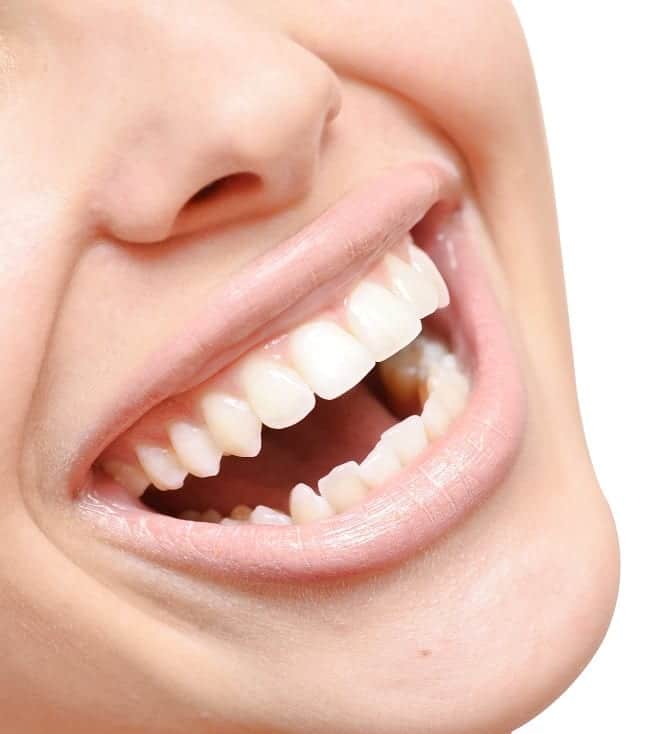Are your God-given teeth less than ideal? Have you lost teeth through the years? Are they decaying badly? Do they look weird and give you an underbite or overbite? Do you wish to get a dazzling grin that the celebrities have? Then you should look into aesthetic or cosmetic dentistry. Arguably, all dentistry is done for aesthetics or the beautification of your smile. However, some procedures are more about form than function than others. Aesthetics or the subjective quality of beauty and form is also covered by a certain dentistry type.
Orthodontics, for example, has aesthetic benefits to it but teeth whitening or applying veneers are more for aesthetics than putting on braces to correct your bite. At any rate, if you want work done on your teeth with dentures that look natural instead of fake, then you should avail of the services of Thantakit.
What Is Aesthetic or Cosmetic Dentistry?

Aesthetic or cosmetic dentistry is the type of dentistry doesn’t only beautify teeth but also your gums and/or bite. It’s specifically used to improve your mouth shape and smile quality that can even extend all the way towards improvement of the function of the teeth in terms of its bite form and force. However, it’s the type of dental work that’s mostly preoccupied with the improvement of your teeth’s appearance and not necessarily its functionality, as in the case of teeth whitening.
In many cases, functional improvements are incidental to the success of aesthetic dentistry. It’s characterized by the following traits that differentiate it from standard dental, gingival, and oral practices towards the healthiness of your teeth, gums, and mouth.
- Focused on Dental Aesthetics: Aesthetic dentistry is mostly focused on improving the color, shape, size, position, and alignment of the teeth as well as the overall appearance of your smile. This extends to healthy gums that can be surgically altered to make a smile less gummy and jaw structure. Some might argue that dental treatments by themselves can result in better form as well as function, but some wish to avail of dentistry that’s strictly about teeth beautification.
- The Tasks of Aesthetic Dentists: The dentists who specialize in aesthetic dentistry are called aesthetic dentists, but because this dentistry type is mostly known as cosmetic dentistry, they’re more commonly known as cosmetic dentists. Their specific experience in the field, training, specialty, and education are focused on this dentistry type even though it’s not considered a formal specialization. Even though there are whitening options available over-the-counter, an aesthetic dentist is still preferable because dentist-supervised treatments have the highest success rates in lightening teeth discoloration.
- Aesthetic Dentistry Controversies and Realities: There is controversy in regards to dentists undergoing cosmetic dentistry specialization or identifying as cosmetic dentists in terms of the ethics of the practice since its predominant objective is to market these professionals to patients as the equivalent of the plastic surgeon in the world of dentistry. In fact, the American Dental Association or ADA doesn’t recognize aesthetic dentistry as a formal specialty.
Types of Aesthetic Dentistry

Aesthetic or cosmetic dentistry might involve the following types of work done on your teeth, gums, mouth, and jaw, which can extend to orthodontics (braces) and prosthodontics (dentures).
- The Addition of Dental Material: You can end up with a megawatt smile to rival Tom Cruise’s or Brad Pitt’s by requesting your aesthetic dentist to add dental material to your gums or teeth. You can specifically order gum grafts, crowns or caps, porcelain veneers or laminates, and bonding treatments to your teeth and gums.
- The Removal of Dental Material: If you have a gummy smile, your gums might be adjusted so that there’s more teeth present. Ditto if you or your dentist feel like you have teeth that are too big. Gum removal is called gingivectomy. Enamel scaling and removal is called enameloplasty. Some dental clinics can do teeth sculpting and reshaping as well as bonding in one visit.
- Cosmetic Improvements without Adding or Removing Anything: There exist aesthetic techniques devised to improve your smile without adding or removing your gums, tooth structure, or other dental materials. This includes gum depigmentation to get your gum color right, laser whitening or bleaching of your teeth’s enamel, and so forth.
- Straightening The Teeth to Improve The Face: Your overbite, underbite, or horse-like teeth should be improved by teeth that have been straightened properly through techniques like putting on braces or retainers, otherwise known as orthodontic dentistry. This will then result in the improvement your face’s appearance due to how your jaw or chin and cheeks have drastically changed.
Methods of Aesthetic Dentistry

An aesthetic dentist has many arrows in his quiver when it comes to his methods or procedures that help you get a more aesthetically pleasing smile through mostly cosmetic or partly functional means. They include the following.
- Whitening: The teeth whitening process is probably the most common aesthetic dental service available. Your dentist will first determine if bleaching can whiten your teeth. Some dental discoloration is due to a dying tooth or issues with your dentin or the layer below the enamel, so bleaching the enamel won’t make it whiter. Some procedures also work better than others. There are concerns about bleaching making your teeth sensitive, but modern formulations are quite safe, fast, and easy to do.
As for laser whitening, it’s a dental whitening technique wherein gums are covered with rubber and the peroxide bleach is applied unto the teeth. Afterwards, the flash of the argon laser is projected upon the teeth in order to accelerate the bleaching process. It works the same way sunshine can accelerate the whitening of your clothes that have been treated with bleach. The chemical reaction lightens the color of the teeth because the laser activates the peroxide’s bleaching properties, making it 6 times more effective than regular teeth whitening procedures.
- Reshaping: Reshaping a misshapen tooth requires removal of part of the enamel to improve tooth aesthetics. This procedure can be used to correct chips and cracks on the teeth. It can also change the teeth’s position, shape, or length if it’s too long or crooked. If there are tooth size discrepancies between one or more of your teeth, reshaping them can correct that condition, resulting in the disappearance of an overbite or underbite.
Once enamel is removed you can’t replace it, so proceed with caution when using this technique that can even expose the dentin of your tooth or teeth. It’s also known as stripping, slenderizing, recontouring or contouring, odontoplasty, and enamelplasty. It’s a procedure that offers results for improving your dental aesthetics ASAP and can even serve as a substitute procedure for braces or orthodontics in certain scenarios.
- Bridging: A dental bridge is a type of prosthetic that uses the healthy teeth on either side of the extraction site or sites as support posts for the hanging dentures. It can also be supported by one or more dental implants, like in the case of all-on4 to all-on-8 implants. A bridge can hang on one tooth and it’s known as the cantilever bridge. If you have one or more missing teeth, you can avail of this service. The teeth where the bridge is placed needs to be prepared first into abutments.
An abutment is a tooth or denture placed on the dental implant that’s been shaved and shaped into a size where the cap or crown can fit over them. The missing false tooth or pontic is hanging between the abutments. The bridge is cemented unto the abutments and special floss is used to clean a bridge versus normal teeth and normal side-by-side gaps. Bridges can be composed of more than three teeth and their viability is determined by applying Ante’s Law and deciding where in the mouth the teeth are.
- Bonding: The composite resin bonding process is when an enamel-like dental composite material is applied to the surface of the teeth, sculpted into shape, hardened, and then polished. It can be used as filling or it can be used as tooth cement as well as a bonding agent for veneer creation. The resin sticks to the tooth’s surface like plaster and then can be shaped, hardened, and polished like cement.
This composite resin is particularly useful with inlays and onlays, which are utilized for the sake of repairing cracked and decayed teeth. However, they do have certain limits, like if there’s little left of the tooth that can be fixed or if that tooth is a molar, you’re best bet is either putting a crown over it or undergoing an endodontic root canal procedure then putting a crown over it after inert material has been put inside the tooth to replace the decayed dentin.
- Materials: Back in the day, dental fillings were made of gold, silver amalgam, or other metals since they kind of shine and glint enough to blend with the rest of your teeth while being tough as nails (if not tougher). Some of them were veneered with porcelain or even shells by dentists with outdated practices. Modern dentistry has thankfully advanced enough to make use of composite materials that blend in better with the tooth structure’s natural appearance. Amalgam has fallen to the wayside due to its use of harmful mercury, even though it’s still FDA-approved.
- Implants: Meanwhile, implants are artificial tooth anchors or roots that allow you to affix or embed a denture unto your mouth and make it act like natural teeth. The implant is a superior method of teeth replacement because it’s usually drilled right into the jawbone itself. According to the International Congress of Oral Implantologists or ICOI, there are typically 3 parts to what’s described as a dental implant—the dental crown or denture connected to the implant through the abutment, the implant itself, and the abutment that serves as the middleman between the two.
- Gum Lifts: Ever heard of a facelift? There’s also such a thing as a gumlift, gum-lift, or gum lift. It’s ostensibly an aesthetic dental service that raises then sculpts the gum line so that your smile doesn’t look too gummy or too toothy because there aren’t enough gums to go around. The process reshapes the gingival tissue and/or the underlying bones underneath it in order to create the appearance of more symmetrical or longer teeth for your winning smile.
- Straightening: Teeth straightening is right up there with teeth whitening as one of the most requested services from the aesthetic dentistry industry. You can get straighter teeth gradually but surely with the help of braces or retainers. You can also avail of the Invisalign treatment that makes the braces as invisible to the naked eye or at least the quick glance as much as possible, allowing you more flexibility compared to metal braces. It helps fix overlapping, crowding, or spacing of teeth to create the smile you want.
- Bite Reclamation: You can reclaim or fix your bite with this aesthetic dentistry treatment. It’s reserved for those who have the vertical dimension of their teeth changed due to years of excessive wear-down on their teeth due to acid reflux or grinding (also known as bruxism). Because they have a shorter or closed look to their smile and face, they need bite reclamation to open up their bite and jaw again. A qualified specialist in this area should be hired to do the procedure.
Mix Business and Pleasure with Thantakit’s Aesthetic Dentistry

The Thantakit Dental Center has multiple methods to whiten your teeth and make them align perfectly, such that you’d end up with a celebrity’s smile. If you want to look like Chris Pratt, Chris Hemsworth, or Chris Evans, then you need to look no further than the cosmetic and functional services of Thantakit. It offers teeth bleaching, laser whitening, orthodontics, or even all-on-4 to all-on-8 dental implants. They can save dying teeth or extract teeth that are too diseased to allow for bridge or implant therapy.
Yes, it’s possible through Thantakit to get a million-dollar smile on an affordable budget while at the same time spending time vacationing in Thailand. Does that sound too good to be true? Maybe, but it’s no false or a pipe dream! You can indulge in your own wellness vacation for cosmetic or health purposes at Thailand’s Thantakit Clinic through the dental tourism package. These procedures come at rates so low they can compete with dental rates of your local dentist even when including travel costs and whatnot. On top of all that, you can get to enjoy Thailand in all its beauty once the treatment is done!
Thantakit International Dental Center is Thailand’s longest established dental center. Situated in Bangkok, our clinic is renowned across the world as a destination for world-class dentistry, with most of our patients flying to us from Australia.
Please contact us today and get a FREE dental consultation.












